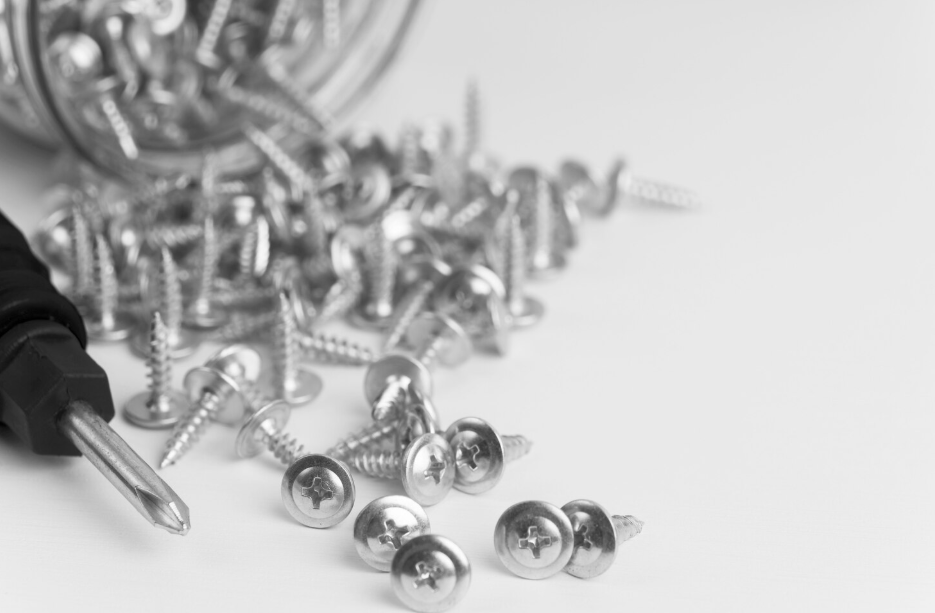Selecting the correct screw size is one of the most important details in any construction, repair, or assembly project. The wrong screw length or diameter can lead to weak joints, stripped threads, or even damaged materials. This guide explains how to determine the ideal screw size for wood, metal, and plastic applications while maintaining both strength and precision.
Understanding Screw Dimensions
Screw sizes are typically described by three measurements: diameter, length, and thread count. The diameter determines how thick the screw is, the length specifies how deep it goes into the material, and the thread count (or pitch) controls how tightly it grips. In the United States, screw diameters are often indicated by numbers such as #6 or #10, while in metric systems, measurements are given in millimeters (e.g., M4, M6). Knowing how to read these specifications ensures a precise fit for every project.
The Importance of Length
A screw’s length must match the thickness of the materials being joined. If a screw is too short, it won’t hold securely; if too long, it can penetrate through the other side and cause damage. A good rule of thumb is to choose a screw that penetrates at least half the thickness of the base material. For example, when fastening two pieces of wood, the screw should extend about two-thirds into the bottom piece for maximum grip strength.
Choosing the Correct Diameter
The diameter determines how much holding power a screw has. Thicker screws can bear heavier loads, but if oversized, they may split the material or strip the hole. Lighter materials like pine or plastic require smaller diameters, while structural elements such as beams or metal joints demand thicker screws. Using washers or pilot holes can also help distribute pressure and prevent cracking during installation.
Thread Type and Pitch
Thread design varies based on material and purpose. Coarse-thread screws have wider spacing and are ideal for wood, providing better bite and faster installation. Fine-thread screws, on the other hand, are commonly used for metal and plastic, where precision and resistance to vibration are critical. Always match the thread type to your material to ensure optimal performance and prevent loosening over time.
Pilot Holes and Pre-Drilling
Pre-drilling pilot holes is essential when working with dense materials such as hardwood or metal. A pilot hole should be slightly smaller than the screw’s core diameter, allowing the threads to cut cleanly into the surface without splitting it. This method also improves alignment and reduces friction, especially when using long or thick screws. For softwoods or plastics, pre-drilling may not always be necessary but is still helpful for precision work.
Screw Head Types and Compatibility
While size and length determine strength, the head type influences how easily the screw can be driven. Common head styles include flat, pan, oval, and hex heads. Flat heads sit flush with the surface, ideal for furniture or cabinetry. Pan and oval heads provide a finished look, while hex heads offer greater torque for heavy-duty construction. Always ensure your screwdriver or drill bit matches the screw’s head to prevent slippage or damage.
Material and Application Considerations
Different materials require specific screw sizes and features. Consider these guidelines:
• Wood – Use coarse threads and longer screws for firm grip and deep penetration.
• Metal – Choose fine-thread screws with pre-drilled holes or matching nuts.
• Plastic – Opt for smaller diameters and sharp points to prevent cracking.
• Masonry – Use special concrete screws with hardened threads and anchors.
• Composite materials – Balance length and thickness to avoid surface distortion.
Tips for Measuring Screw Size
• Measure from the screw’s tip to the base of the head for total length.
• Check thread spacing using a gauge or ruler for accurate pitch.
• Always verify hole and screw diameter compatibility before assembly.
• When unsure, test-fit one screw before committing to full installation.
• Keep a screw size chart or caliper handy for quick reference on-site.
Common Mistakes to Avoid
Using mismatched screw sizes or skipping pilot holes can lead to costly repairs. Over-tightening can strip threads, while under-tightening leaves joints unstable. Additionally, mixing metric and imperial screws in the same assembly can cause misalignment or loosened fittings. Always confirm your screw type, size, and drive tool before starting any project.
Conclusion
The right screw size ensures not only a solid connection but also the long-term durability of your project. Understanding the relationship between length, diameter, and thread type allows for more efficient, professional results. Whether you’re assembling furniture, building a deck, or fabricating metal structures, proper screw sizing is the foundation of every reliable build. Take the time to measure carefully, choose wisely, and your fasteners will never fail you.

